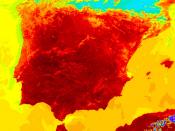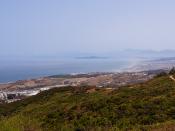**this was written as the first stage of analyizing Spain for the introduction of a franchise**
In the beginning, Spain endured a diversified number of cultures. Around 1600 B.C., the Iberians arrived in Spain. Migration into Spain continued from Europe beyond the Pyrenees, the Mediterranean, and North Africa. Following the Iberians, came the Celts. The two cultures merged and established a distinctive Celt Iberian culture. In 1492, the Moors, a nomadic, Muslim tribe of North African origin, were driven off of the Iberian Peninsula. Shortly after, several kingdoms on the Iberian Peninsula merged to form what is modern-day Spain.
Spain is located in southwestern Europe and occupies approximately 80% of the Iberian Peninsula. It shares the west side of the peninsula with Portugal and is separated from France in the northeast by the Pyrenees Mountains. The remainder of Spain is bordered by the Bay of Biscay to the north/northwest, the Atlantic Ocean to the west, and the Mediterranean Sea and Balearic Sea to the east.
Spain's capital, and largest city, Madrid has an urban population of 17 million, constituting 45% of Spain's total population. Most of Spain is mountainous, but there are some lower elevations in the south and southwest.
Spain offers a rather moderate climate. The country's average temperature extremes are between 30 and 90 degrees (F), with January being the coldest and July and August being the warmest months. Spain also has a relatively low annual precipitation average of 17.8 inches per year.
The communications network of Spain is well-established. Spain has 5 news agencies, 87 daily newspapers, 5 broadcast television networks offering 228 television stations, and 15 radio networks controlling 715 FM and 208 AM stations. The Internet is also a common mode of communication, with a user base of nearly 8 million.
With over 400,000 miles...



NIce
I like it plenty of information and ref
0 out of 0 people found this comment useful.